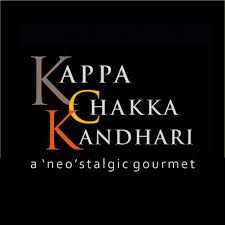
For a food loving Malayali in Chennai, the number of eateries serving Kerala cuisine has increased over the years. But, my favourite to-go places have changed. For many years, from 1986 when I first came here, till around the mid-90s it was Kalpaka, a small joint in the first floor of a nondescript building, on TTK Road, behind Music Academy. It was known for serving excellent and homely Kerala food at affordable rates. For some time, it was Kumarakom. If I am not mistaken, the name was chosen sometime around 2000, soon after PM Vajpayee made it famous following a holiday retreat in Kumarakom in Vembanad Lake, Kerala.
On relocating to Chennai in 2003, after a decade in Mumbai, the choice fell on Ente Keralam. This was a place of first choice for many years, for taking out my guests coming to Chennai. All of the above might still be maintaining their standards, but my first choice is currently Kappa/Chakka/Kandhari, Malayalam for tapioca, jack fruit, and bird’s eye chilli, all exotic ingredients that go into popular Kerala dishes.
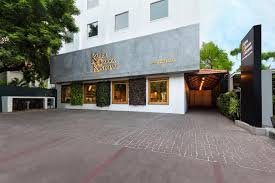
Kappa Chappa Kandhari describes itself as “a nostalgic gourmet dining experience”. It is built on the vision of reclaiming traditional Kerala food for a new generation, bringing to light the coastal state’s hidden culinary gems. Though it has a branch in Koramangala, Bengaluru, the main branch is located on Haddows Road in Chennai, near where it meets Nungambakkam Road.
The choice of recipes is reminiscent of what one would have eaten in younger days in the Kerala of 1960s and 70s. As their tagline goes, it is “Rooted in tradition, Kappa Chakka Kandhari is an homage to the simple, evocative food cooked with love by mothers.” My experience of dining at KCK proved that when they claim to be “a restaurant that captures the spirit of Kerala, the flavours of childhood, and the zest of home-cooking,” they are not just boasting. It is no wonder, therefore, that KCK has been ranked 23 among India’s Top 50 Restaurants, by Conde Nast Traveller India.
The main USP of KCK is its localised menu, sourced from numerous homes and nameless shops. The founders, Chef Regi Mathew, and partners Augustine Kurian and John Paul, had travelled through Kerala for three years, collecting recipes and culinary secrets. As their website explains: “They joined families over lunch, cooked and ate with them; snacked at toddy shops, and sourced prized recipes that showcase the staggering diversity of Kerala’s cuisines. Their extensive travels also helped them source unique and high-quality ingredients from farms, self-help groups and home chefs across the state.” The team apparently covered over 265 homes and 70 toddy shops across Kerala, collecting and testing over 800 recipes.
Secondly, they get source their raw material directly from the farmers. This enhances the quality as well as enabling them to keep the prices low.
Thirdly, the three partners bring in their strengths to make the restaurant a success. While Chef Regi is in charge of kitchen and choice of menu, Augustine Kurian, brings 25 years of experience in event management to handle operations, brand and marketing. John Paul, interior designer, is responsible for the sleek and homely ambience. He also handles finance and logistics.
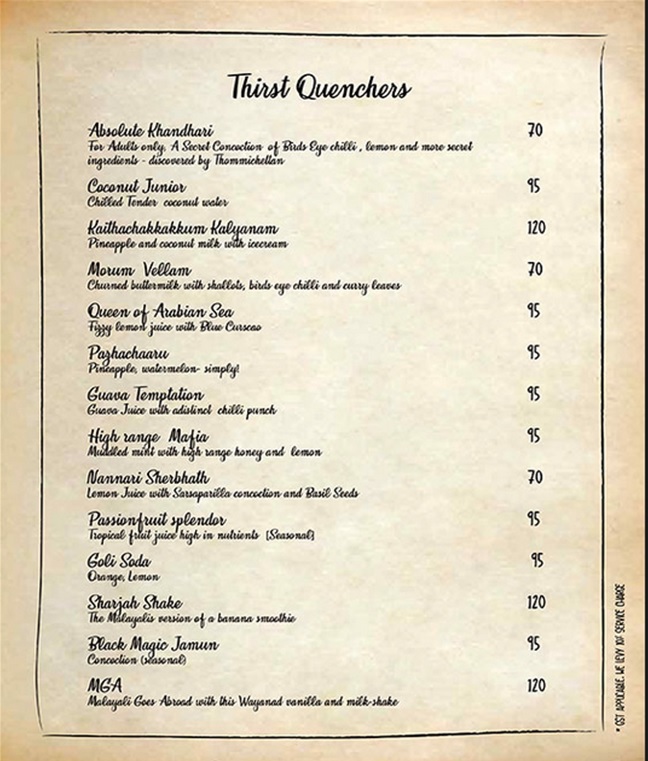
Fourth, all the three put their love and passion into the effort. As they say, “stemming from the founders’ desire to revive the foods they grew up eating, this restaurant is the realisation of an emotional longing for the simple, hearty food their mothers put on the table….The three of them have been brought up on the firm belief that happiness is homemade and every bite should bring back memories of your mother’s cooking.”
Fifth, is the quality of the service. Having met earlier, all three of them were at the table frequently asking what we wanted.
If there is one negative that one can think of, it is that they do not serve liquor. This is probably wise. With bar licences not easy to obtain, serving liquor would have made even food items more expensive. Moreover, it would have brought in a different kind of crowd, not the mix of assorted families that one sees today.
My last two visits were quite memorable. The first of these was with Benny Kuriakose, the architect, and his wife Millie, a nephrologist, and their daughter Ammu, another doctor in the making. Benny knew all the three partners quite well. That meant that there was an endless stream of dishes including many to be sampled, and not billed. The last visit was with Jayaram, a former old colleague, who went on to work in Switzerland, ending up as Swiss citizen.
There is a belief that KCK is only for non-vegetarians. But, the vegetarian convert that I am, I thoroughly enjoyed my meals there.
I chose Nannari sherbet, lemon juice with sarsaparilla concoction and basil seeds. It reminded me of the many hot afternoons at my grandfather’s dispensary, when we brothers were all treated, from a nearby shop, to the best nannari sherbet that we ever tasted. Jayaram chose chilled tender coconut water.
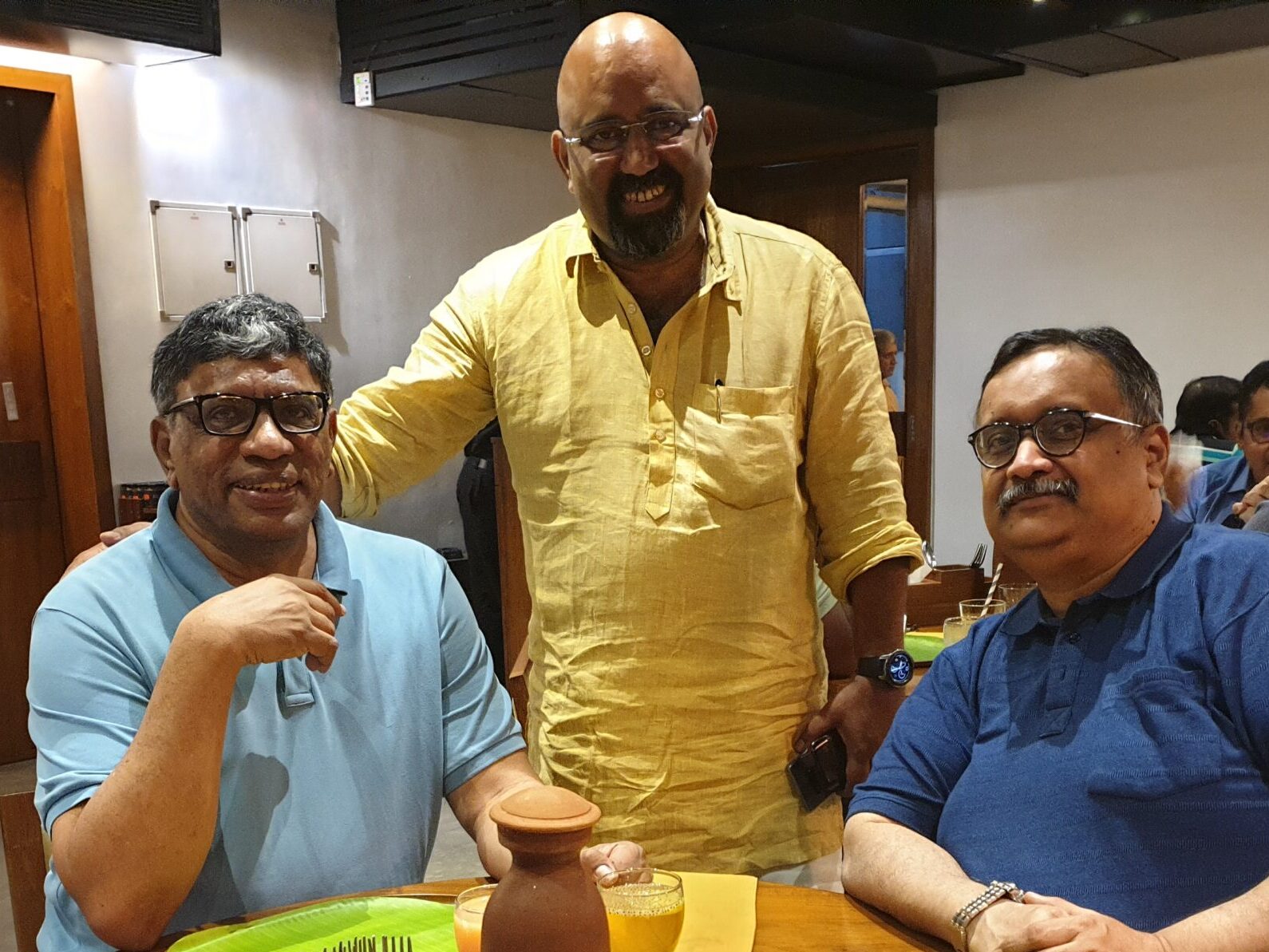
Meanwhile, Augustine had arranged for some starters. I chose Vazhapoo Cutlets, banana flower with potato, delicately seasons, and crumb fried. Jayaram went with a Prawn Kizhi, prawns cooked with coconut masala and wrapped in banana leaves and steamed.
For the main course, we chose a mix of Appams and Kerala parottas. For accompaniment, we shared a Mutta Roast (egg roast), a typical Malabar dish, and Vegetable Stew. For Jayaram, there was Varutharacha Kozhi Curry, free-range chicken cooked with roasted coconut masala and curry leaves.
For dessert, we shared a Palada (fresh rice flakes cooked with jaggery and reduced milk) and Kandhari Ice Cream, “explosive but mild and perfect blend of sweet and spice of Kandhari chillies, in an ice cream form.”
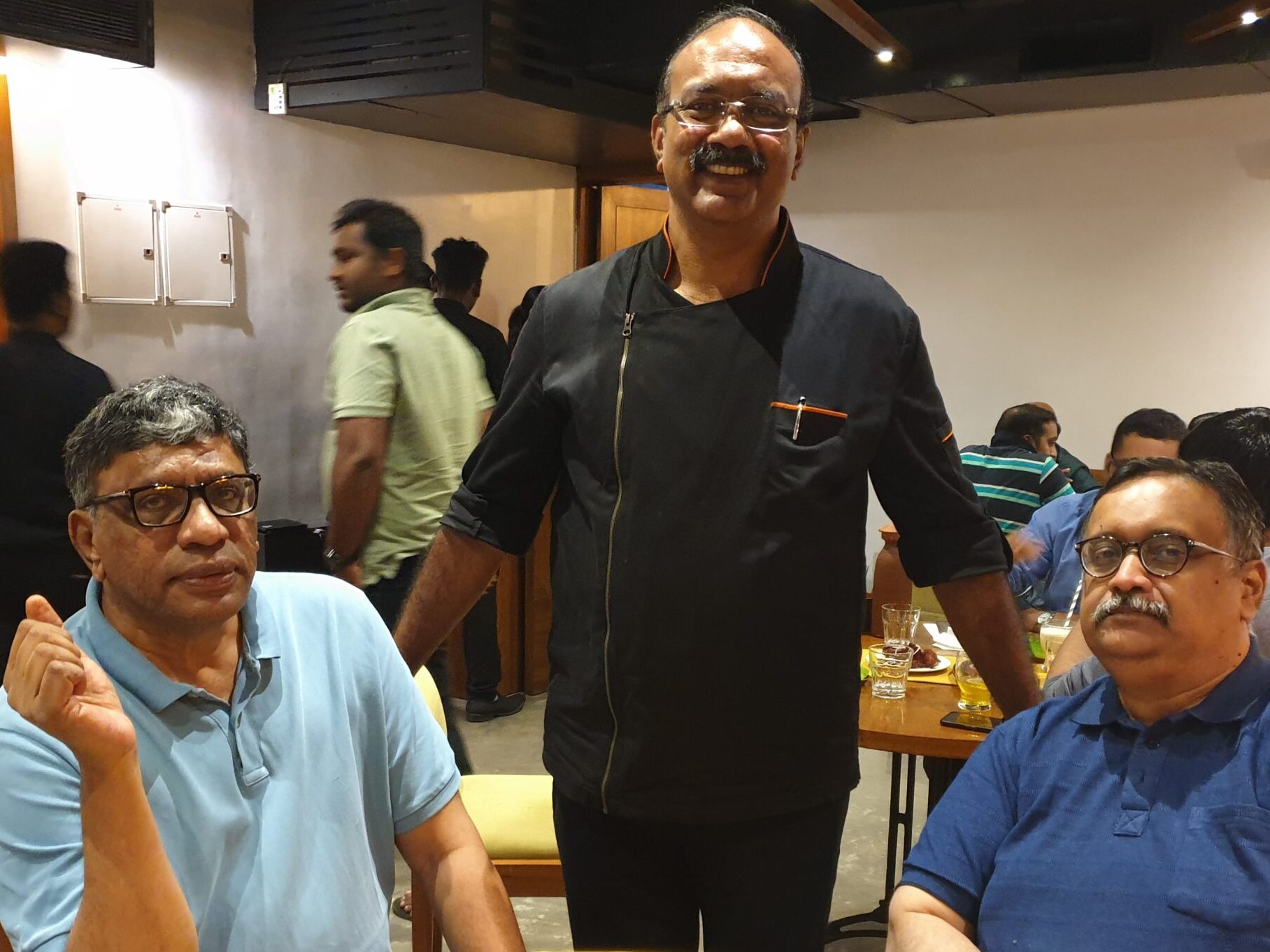
And, of course, Regi and Augustine kept dropping by (John Paul was away). And there were a few other items on the house.
This was just about ten days before the pandemic lockdown started. Now, the next visit will have to wait.
![]()